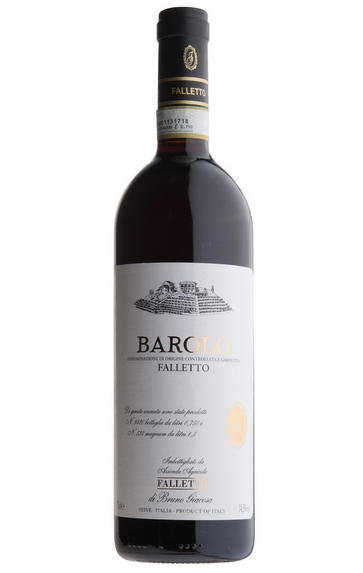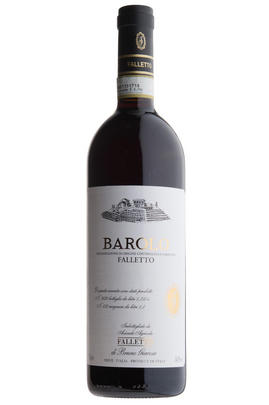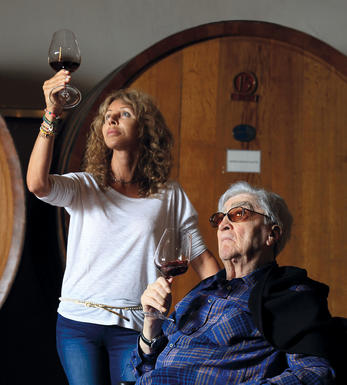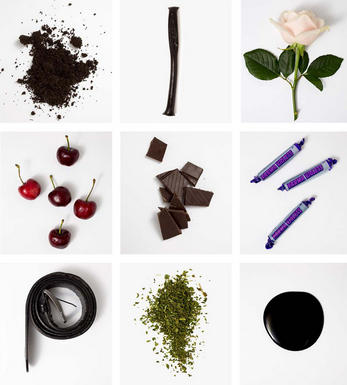
2012 Barolo, Falletto, Bruno Giacosa, Piedmont, Italy

Critics reviews
Monica Larner - 30/06/2016
About this WINE

Bruno Giacosa
Giacosa are revered globally, with a reputation built on the elegance, purity and complexity of wines produced over the lifetime of Bruno Giacosa, who died in 2018. Over the course of 60 years, he came to be recognised as one of Piedmont's greatest winemakers. In 1945, at the age of 16, Bruno began working full-time in the family cellar. Rather than studying oenology, he instead absorbed the traditional knowledge and techniques passed down through his family. His approach was deeply considered, single-minded and perfectionist. Famously exacting and modest, he let his wines speak for themselves. Since 2006, the estate has been ably run by Bruno’s daughter, Bruna. Bruno’s standards have been upheld, with continued, unwavering commitment to producing wines of both the highest quality and of true vineyard expression. Since the 2012 vintage, all of their Barbaresco and Barolo have been made exclusively from estate-grown fruit.
There was a degree of circumspection here around the 2019 vintage. While it is certainly felt to be a good year – and a step up from 2018 – 2016 is seen as the paradigm, with 2019 not quite hitting its heights. Regardless of that, 2019 is still praised as having “everything”, and is considered a vintage that is balanced and complete. However, Giacosa have opted not to make their Vigna dei Rocche Riserva this year, and are delaying the release of the non-Riserva 2019 until later in 2023.

Barolo
Located due south of Alba and the River Tanaro, Barolo is Piedmont's most famous wine DOCG (Denominazione di Origine Controllata e Garantita), renowned for producing Italy's finest red wines from 100 percent Nebbiolo.
Its red wines were originally sweet, but in 1840 the then extant Italian monarchy, the House of Savoy, ordered them to be altered to a dry style. This project was realised by French oenologist Louis Oudart, whose experience with Pinot Noir had convinced him of Nebbiolo's potential. The Barolo appellation was formalised in 1966 at around 1,700 hectares – only a tenth of the size of Burgundy, but almost three times as big as neighbouring Barbaresco.
Upgraded to DOCG status in 1980, Barolo comprises two distinct soil types: the first is a Tortonian sandy marl that produces a more feminine style of wine and can be found in the villages of Barolo, La Morra, Cherasco, Verduno, Novello, Roddi and parts of Castiglione Falletto. The second is the older Helvetian sandstone clay that bestows the wines with a more muscular style. This can be found in Monforte d'Alba, Serralunga d'Alba, Diano d'Alba, Grinzane Cavour and the other parts of Castiglione Falletto. Made today from the Nebbiolo clones Lampia, Michet and Rosé, Barolo has an exceptional terroir with almost every village perched on its own hill. The climate is continental, with an extended summer and autumn enabling the fickle Nebbiolo to achieve perfect ripeness.
Inspired by the success of modernists such as Elio Altare, there has been pressure in recent years to reduce the ageing requirements for Barolo; this has mostly been driven by new producers to the region, often with no Piedmontese viticultural heritage and armed with their roto-fermenters and barriques, intent on making a fruitier, more modern style of wine.
This modern style arguably appeals more to the important American market and its scribes, but the traditionalists continue to argue in favour of making Barolo in the classic way. They make the wine in a mix of epoxy-lined cement or stainless-steel cuves, followed by extended ageing in 25-hectoliter Slavonian botte (barrels) to gently soften and integrate the tannins. However, even amongst the traditionalists there has been a move, since the mid-1990s, towards using physiologically (rather than polyphenolically) riper fruit, aided by global warming. Both modernist and traditional schools can produce exceptional or disappointing wines.
Recommended traditionalist producers:
Giacomo Borgogno, Giacomo Conterno, Bruno Giacosa, Elio Grasso, Marcarini, Bartolo Mascarello and Giuseppe Mascarello.
Recommended nmdernist producers:
Azelia, Aldo Conterno, Luciano Sandrone, Paolo Scavino and Roberto Voerzio

Nebbiolo
Nebbiolo is the grape behind the Barolo and Barbaresco wines and is hardly ever seen outside the confines of Piedmont. It takes its name from "nebbia" which is Italian for fog, a frequent phenomenon in the region.
A notoriously pernickety grape, it requires sheltered south-facing sites and performs best on the well-drained calcareous marls to the north and south of Alba in the DOCG zones of Barbaresco and Barolo.
Langhe Nebbiolo is effectively the ‘second wine’ of Piedmont’s great Barolo & Barbarescos. This DOC is the only way Langhe producers can declassify their Barolo or Barbaresco fruit or wines to make an early-drinking style. Unlike Nebbiolo d’Alba, Langhe Nebbiolo can be cut with 15% other red indigenous varieties, such as Barbera or Dolcetto.
Nebbiolo flowers early and ripens late, so a long hang time, producing high levels of sugar, acidity and tannins; the challenge being to harvest the fruit with these three elements ripe and in balance. The best Barolos and Barbarescos are perfumed with aromas of tar, rose, mint, chocolate, liquorice and truffles. They age brilliantly and the very best need ten years to show at their best.


Buying options
Add to wishlist
Description
The stony, chalky minerals of this renowned site in Serralunga d’Alba come through on the nose and palate, adding to the precision lent by defined tannins and clean acidity. Layers of crunchy red fruit, smoky spice and rich plums hint at the complexity to come with time in bottle.
“There is only one Bruno Giacosa. No one will ever make wines like these. It's as simple as that.” Antonio Galloni, Vinous Media
wine at a glance
Delivery and quality guarantee